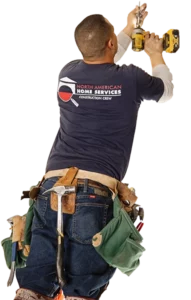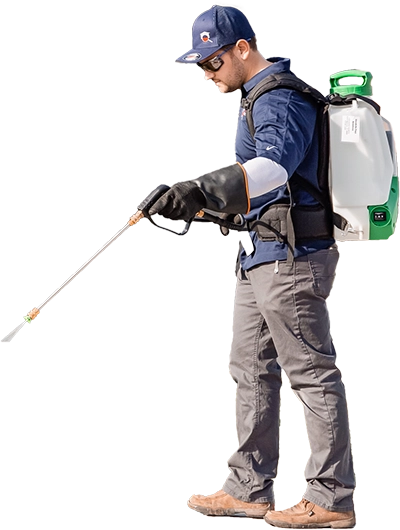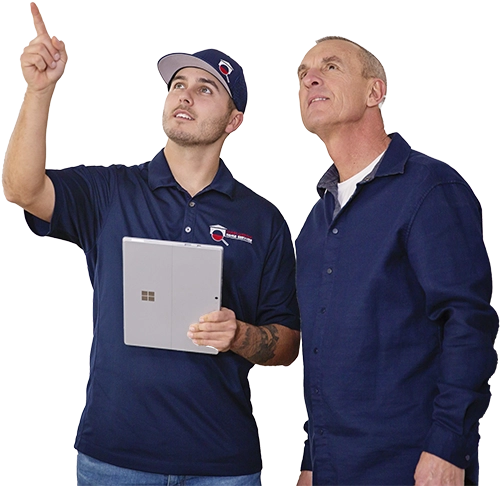If you are dealing with a termite or wood boring beetle infestation, then you know how difficult it can be to both get rid of the pesky critters and repair any damage they may have caused. While some people turn to bait stations or insecticide treatments to eliminate the infestation, a professional fumigation is often required to fully eradicate wood destroying organisms (WDO).
There really is no getting around it: when you have a WDO infestation on your hands, you can’t go wrong with professional fumigation. If you have not dealt with WDOs before (hopefully you haven’t!), then you might be wondering, what’s the fumigation process like? Do you have to leave your home? And if so, how long do you have to wait after the fumigation to return home?
Hiring a licensed WDO inspector is the only way to know the scope of your infestation and if structural fumigation is the right treatment method.
If you notice termites or wood boring beetles, or if you happen to see signs of their presence because of damage to wood structures, you might think taking a trip down to your local hardware store for bug spray or bait stations will eliminate your problem.
While this type of WDO treatment might work, at best, you’re operating on a hunch—when it comes to WDOs and the damage they can cause, you want to be 100% sure that you know how large the infestation actually is and how much damage has already been done.
That’s why it is always better to hire a WDO professional to inspect your home and report exactly what they find. Only after you get a professional WDO inspection will you know the full scope of the infestation, allowing you to act on the inspector’s recommended treatment method.
A WDO inspection will consist of a thorough review of all visible wooden structures inside and outside the house. The WDO report will detail both the scope of the infestation and the type of damage done to wooden structures, as well as a recommendation on how best to treat the infestation. This is where you might find a recommendation for fumigation. If that is the suggested treatment method, it likely means you have a significant WDO problem that bait stations and chemical spray alone can’t fix.
Fumigation is meant to eradicate both visible and non-visible infestations, which localized chemical sprays or bait stations cannot do.
Fumigation is a process in which a building is sealed shut using plastic, tape, or airtight tarpaulins, and then pumped full of a lethal gas.
The gases used to kill WDOs are lethal to bugs and other organisms. As such, all people, pets, and plants must be removed from the affected area before the fumigation can begin. Medicine and food that are not in airtight containers should also be removed prior to fumigation. In some cases, you can place items in protective bags instead of removing them from the premises. If you have any questions be sure to ask your fumigator how best to prepare for the fumigation. Expect to vacate your home anywhere from a few hours to a week. It depends on the type of infestation, dosage of fumigate, temperature, size of the property, and other factors.
The fumigator will communicate with you when it’s safe to return home. They are required to post a notice of re-entry on the property when the structure is considered safe for occupancy, so you will have a record of the exact time and date you were allowed back.
Does fumigation eliminate all WDOs in the structure?
Fumigation is an all-encompassing treatment method, but depending on the type of infestation you have, it does not eliminate all WDOs, meaning other treatment options are also on the table.
Specifically, subterranean termites require separate treatments. These termites burrow underground, and fumigants may not permeate their nests. If your main infestation is composed of subterranean termites, then your pest control expert will probably opt to go with the bait station or insecticide approach. But you could be dealing with both subterranean and drywood termites, in which case fumigation is still required.
It should be noted that you may see some termite activity for a few days after treatment. This doesn’t mean that the fumigation didn’t work. Drywood termites can live for as long as a week after fumigation.
There are a few things every homeowner can do to minimize the chance of a WDO infestation.
Properly ventilate confined spaces. One of the most common places to find WDOs is under a home in the crawl space, or in otherwise confined spaces like an attic or utility closet. It’s important to keep these areas ventilated. This will insure that the moisture content in the wood members is below 20%—WDOs thrive with higher moisture levels.
Keep your home clear of foliage contact. Tree stumps and dead trees can attract WDOs, so try to remove these and any other foliage that comes in contact with your home. It’s also a good idea to keep firewood and any extra lumber you may have away from your home since these attract WDOs.
Get periodic inspections. In many cases homeowners will not have their home inspected until they are getting it ready for sale, only to find they have an expensive infestation and repair on their hands. A periodic termite inspection is perhaps the best way to avoid infestations. If an infestation is present, it’s much easier to eliminate early on. Even if the inspection finds no sign of termites, wood boring beetles, or a fungal infection, a professional inspector can offer tips on how to prevent WDOs.
If you are concerned that your home is infested with WDOs, or you simply want a preventive inspection, contact North American Home Services! We are fully licensed and have the experience necessary to uncover any type of infestation and recommend how best to treat and repair damages. Contact us today!




